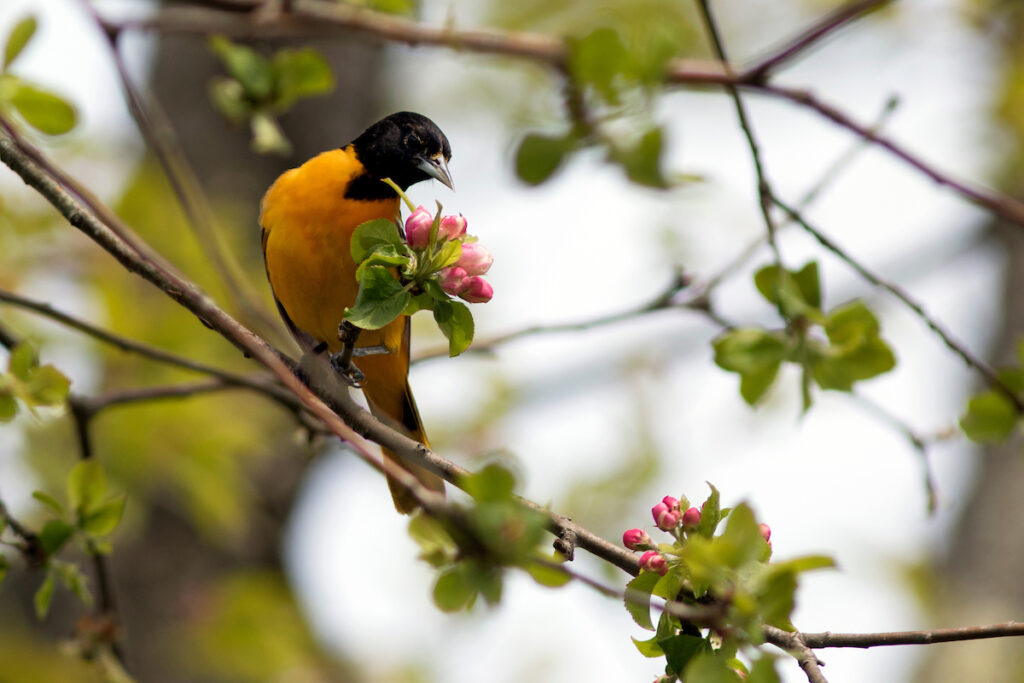
If you have apple or plum trees in your backyard, you have probably already seen Baltimore Orioles in them. These striking orange and black icterids return to southern and central Maine in mid-May, and usually head straight for blossoming fruit trees to forage for insects. They will also visit feeders stocked with orange slices or fruit jelly, especially early in the nesting season. Their loud, clear whistles are the easiest way to find them, since they spend most of their time high in the canopy of deciduous trees, especially in floodplain forests and at the edges of fields and woodlands.
Males return to these habitats first, and vigorously defend territories; females, arriving second, choose among these territories, and after courtship, select a nest site. Nests are most frequently constructed in American Elms, maples, and poplars (especially Cottonwood), all tall trees common in floodplain forests. The female does the majority of the nest-building, weaving together a pendulous, gourd-shaped nest out of three distinct layers of material: (1) an outer layer of flexible fibers, like grass or yarn, for shape; (2) a middle layer of woodier fibers for structure and strength; and (3) an inner layer of soft down, often from willow and poplar seeds. While difficult to spot (intentionally concealed) during the summer, these nests often remain hanging into the autumn and winter, when they are easier to spot in the bare trees. At that point in the year, most Baltimore Orioles have returned to wintering grounds in central America, from Mexico to Ecuador, where they can often be seen on coffee and cacao farms. Supporting bird-friendly coffee and chocolate producers is a great way to conserve Baltimore Oriole habitat, even when the birds are not in our backyards.
Backyard Bird of the Month is a feature by Maine Audubon created for the Maine Home Garden News, the newsletter of the University of Maine Cooperative Extension: Garden and Yard
